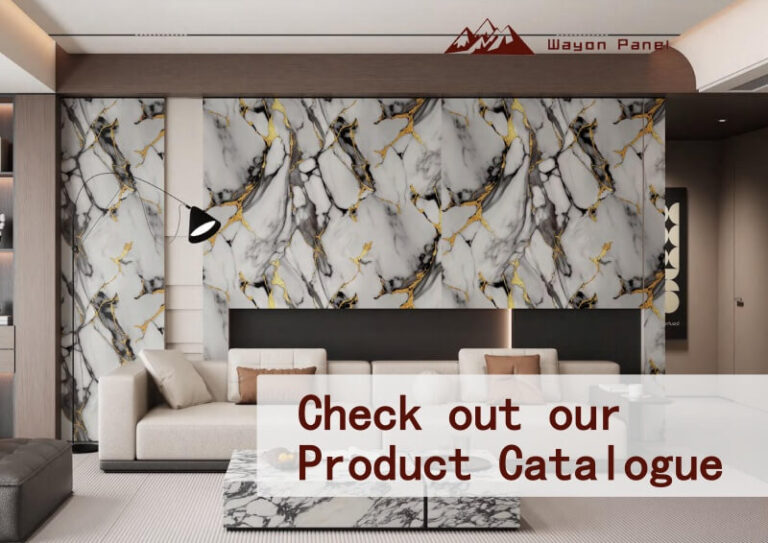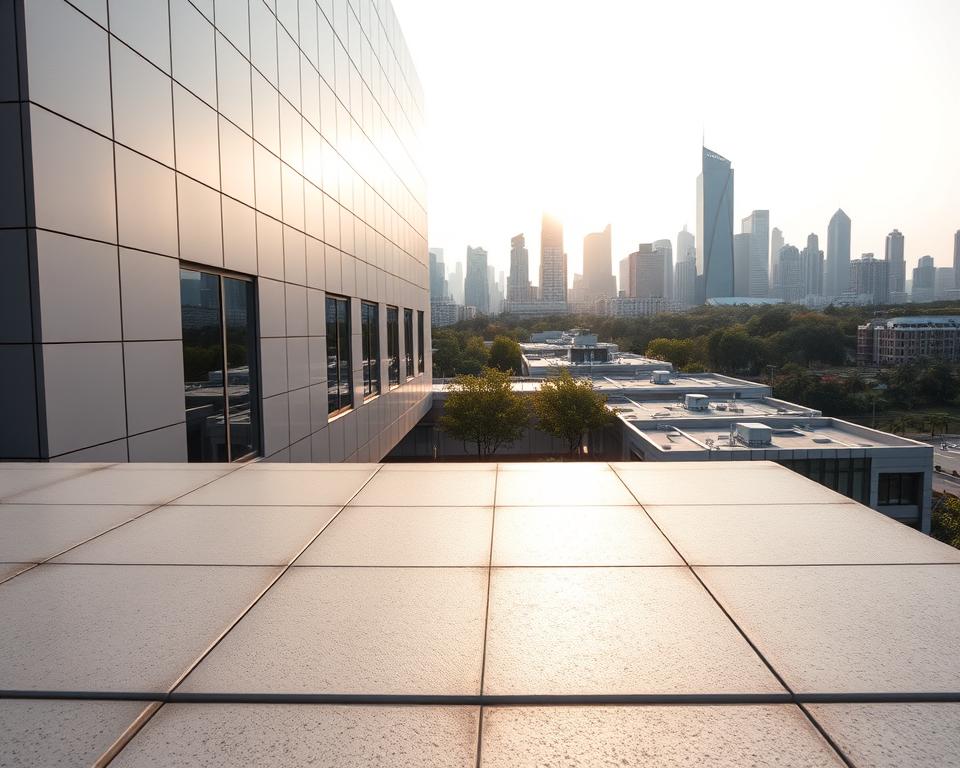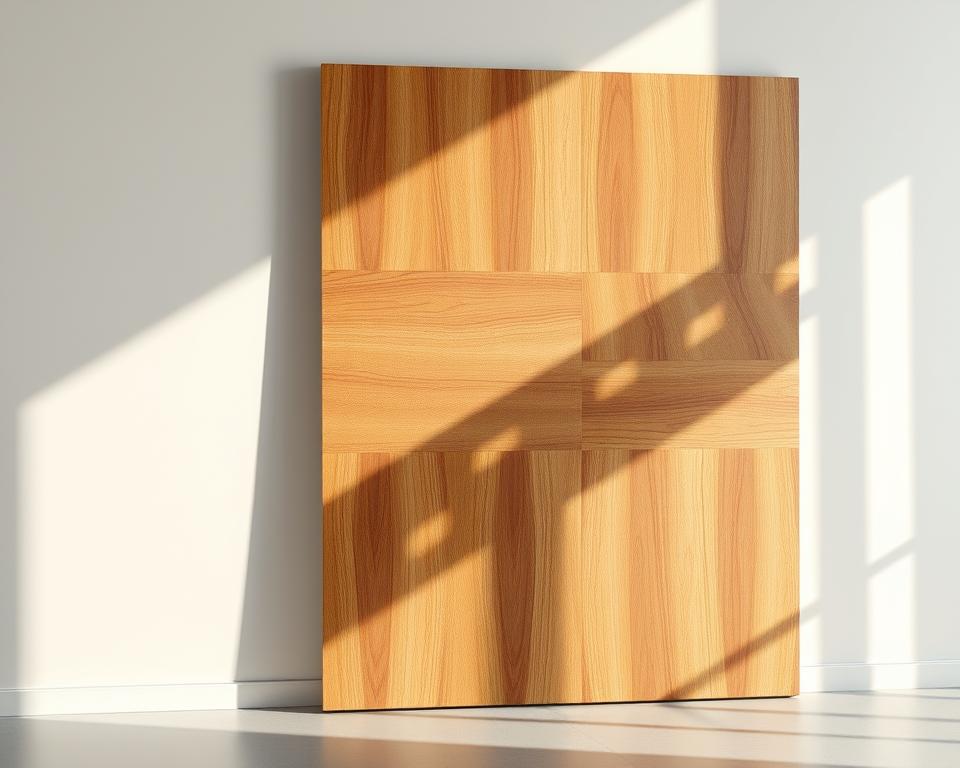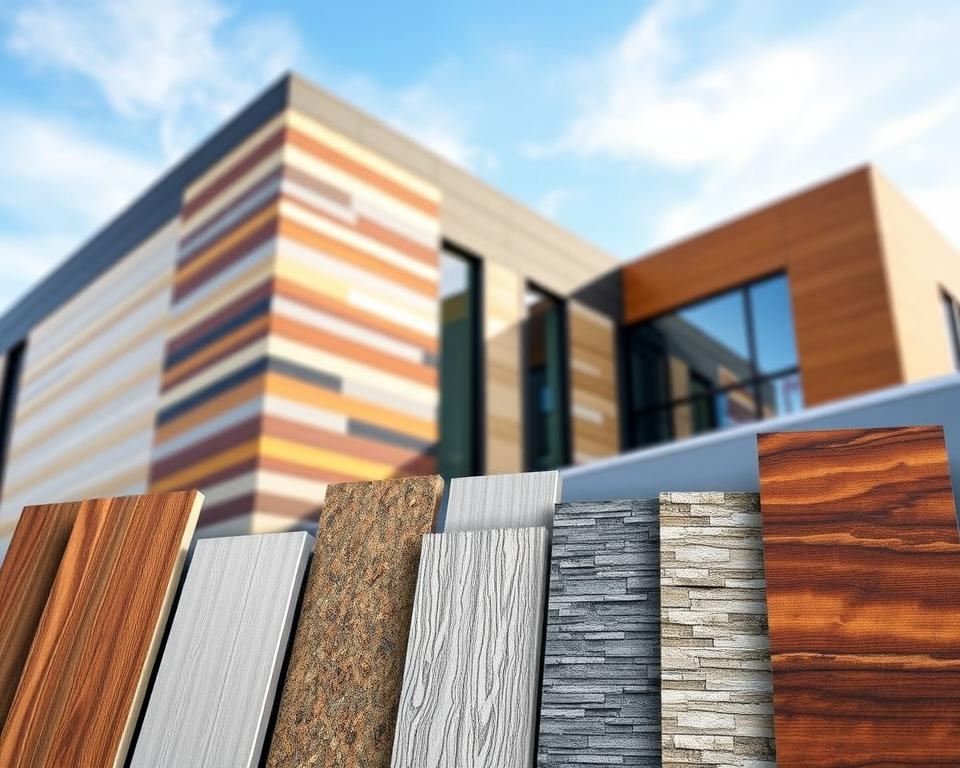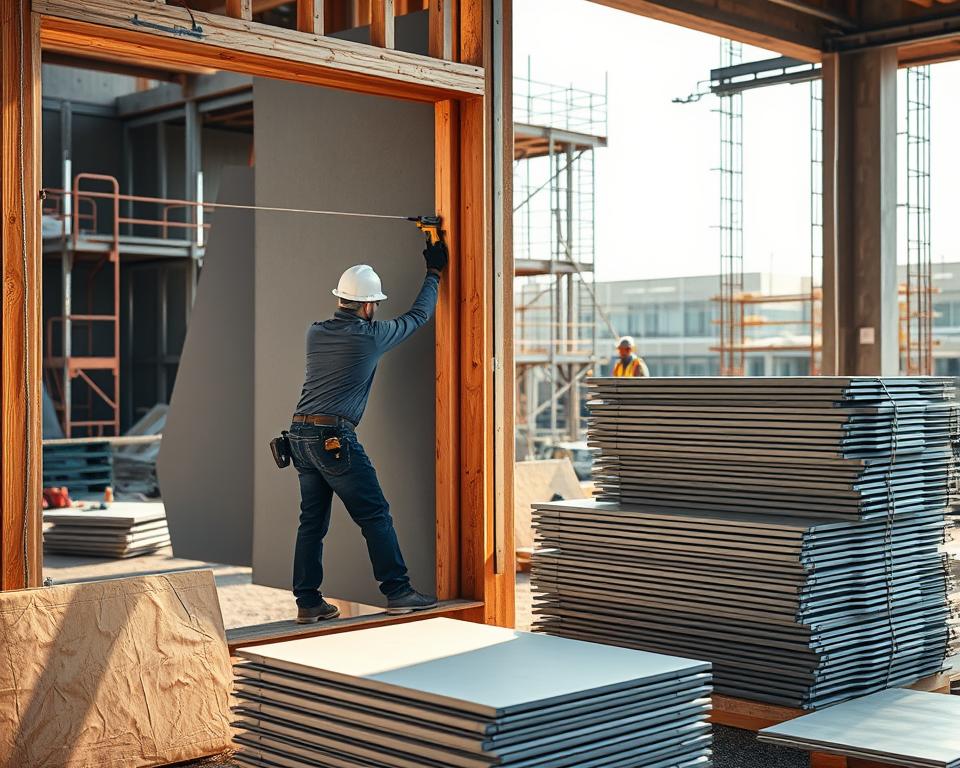Today’s construction industry values materials that balance strength with style. Engineered building systems now offer realistic wood textures alongside industrial-grade durability. These solutions work equally well for storefronts and suburban homes, adapting to diverse design needs while resisting weather damage.
Commercial projects demand surfaces that handle constant use. High-traffic areas need scratch-resistant finishes and easy cleaning options. Many professionals prefer extended warranties that match the lifespan of their buildings. This contrasts with residential priorities, where visual harmony and cozy interiors often take center stage.
Cost factors shift dramatically between project types. Bulk purchasing lowers expenses for large-scale installations, while homeowners focus on long-term value. Advanced manufacturing techniques keep maintenance low across both markets, preventing warping or color fading over decades.
Choosing the right material requires understanding these differences. Contractors weigh installation methods against performance metrics like energy efficiency. Homeowners might prioritize seamless integration with existing décor. Both groups benefit from products designed to outlast traditional alternatives without constant upkeep.
Introduction: Exploring the Benefits of Composite Wall Panels
Modern architecture demands solutions that merge eco-conscious practices with technical excellence. Engineered systems now deliver natural aesthetics through advanced manufacturing, combining recycled resources with weather-resistant properties. These products reduce landfill waste while matching traditional materials in visual appeal.
Breakthroughs in Sustainable Engineering
Recent advancements transform basic recycled blends into high-performance systems. Multi-layer designs now integrate polymers and specialized coatings for scratch resistance. Precise density control ensures consistent textures that mimic wood grain without maintenance.
- 55% recycled wood fiber content in leading brands
- UV-blocking technology prevents color fading
- Waterproof cores withstand coastal humidity
Next-Generation Applications
Builders now use these materials in extreme climates, from desert heat to freezing winters. Protective surfaces handle heavy foot traffic in malls and airports. Emerging smart versions include:
- Moisture sensors embedded in structural layers
- Thermal regulation for energy savings
- Modular designs for quick retrofits
Architects praise the versatility, noting: “We achieve luxury hotel finishes in budget-friendly apartment complexes.” This adaptability makes them ideal for mixed-use developments requiring unified aesthetics.
Composite Wall Panels: Key Features and Innovations
Next-gen construction products merge natural aesthetics with industrial performance. These systems combine weatherproof durability with design flexibility, offering solutions for both exterior facades and interior accents. Their layered engineering addresses common pain points in traditional materials while expanding creative possibilities.

Modern surfaces mimic organic textures through precision molding techniques. Sophisticated embossing creates authentic wood patterns that fool even trained eyes. Hidden fastening systems simplify installation, producing clean lines without visible screws or gaps. “Clients get the warmth of cedar without annual sealing,” notes a Chicago-based contractor.
| Feature | Traditional Wood | Advanced Material |
|---|---|---|
| Surface Texture | Natural grain varies | Consistent embossed patterns |
| Moisture Resistance | Prone to swelling | Waterproof core |
| UV Protection | Requires stains | Built-in inhibitors |
Manufacturers now integrate recycled plastics and wood fibers without sacrificing strength. This eco-friendly approach reduces landfill waste while maintaining structural integrity. Multi-layer designs pair impact-resistant exteriors with insulating cores, cutting energy costs in extreme climates.
Surface treatments have evolved beyond basic color options. Textured finishes replicate weathered barnwood or smooth teak, while specialized coatings resist graffiti in urban settings. These innovations let designers achieve specific moods – from rustic charm to sleek modernity – using one adaptable material.
Commercial Applications: Maximizing Durability and Efficiency
In high-traffic commercial environments, surfaces face constant wear from foot traffic, equipment, and weather exposure. Modern engineered systems address these challenges through multi-layered designs that combine toughness with smart functionality. These solutions maintain their appearance even in demanding settings like shopping centers and office complexes.
Enhanced Durability in High-Traffic Areas
Materials designed for storefronts and lobbies undergo strict testing. They resist dents, scratches, and impacts from carts or equipment. A restaurant owner shared: “Our exterior still looks new after three years of delivery trucks and crowded patios.”
Hidden fasteners and reinforced edges prevent damage at connection points. This reduces repair costs and keeps spaces looking professional. Many products carry certifications for fire resistance and load-bearing capacity.
Optimized Energy and Moisture Management
Integrated thermal barriers cut heating bills by blocking outdoor temperature shifts. Breathable layers allow humidity escape while stopping water infiltration. Facilities managers report up to 18% lower energy use in climate-controlled warehouses.
Eight-year coverage plans back these performance claims, covering material defects and weather-related wear. Drainage channels behind the surface redirect rainwater away from critical structures. This dual approach protects both the building’s shell and indoor air quality.
Residential Applications: Enhancing Aesthetics and Comfort
Creating inviting homes now requires solutions that withstand daily life while elevating style. Modern materials adapt to diverse interior themes while resisting common household challenges. Twelve-year coverage plans give homeowners confidence in their investment’s longevity.
Aesthetic Appeal and Versatile Designs
Homeowners choose from rich color palettes and authentic wood textures that match any décor. These surfaces work equally well for fireplace surrounds and outdoor patios. A designer recently noted: “We transformed a bland bedroom using accent walls with espresso-toned finishes in two days.”
| Feature | Traditional Option | Modern Solution |
|---|---|---|
| Color Retention | Fades in 3-5 years | Stays vibrant 12+ years |
| Moisture Handling | Warping risk | Waterproof core |
| Texture Options | Limited styles | 24+ finishes |
Improved Indoor Comfort and Air Quality
Non-toxic formulations prevent harmful emissions found in some conventional products. Built-in mold resistance keeps basements and bathrooms fresh. Families report fewer allergy symptoms after kitchen remodels using these systems.
Energy-efficient designs help maintain consistent temperatures year-round. Specialized layers block outdoor noise while reducing heating costs. This dual functionality makes them ideal for home offices and nurseries needing quiet comfort.
Energy Efficiency & Maintenance Cost Benefits
Smart building solutions now prioritize year-round comfort without high operational costs. Advanced insulation in modern wall systems reduces temperature fluctuations, cutting HVAC expenses by up to 30%. This thermal stability keeps interiors comfortable during heatwaves and cold snaps alike.
Maintenance demands shrink dramatically with these engineered materials. Unlike traditional options needing seasonal treatments, a simple annual rinse preserves surfaces. “Our facility team saves 40 hours yearly on exterior upkeep,” reports a school maintenance director.
- Insulating layers outperform brick and wood in energy retention
- Mold-resistant surfaces eliminate scraping and repainting
- Interlocking designs speed installation by 25% versus conventional methods
Project budgets benefit from reduced labor needs and lasting performance. Lightweight construction lowers shipping costs while allowing DIY-friendly setups for small upgrades. Price comparisons show 15-year savings offset initial investments within 5-7 years.
These systems integrate seamlessly with smart home technologies and commercial energy trackers. Continuous monitoring ensures optimal efficiency, while durable finishes withstand decades of exposure. The result? Predictable costs and uninterrupted comfort from season to season.
Material Options and Design Flexibility
Design possibilities expand exponentially when materials offer both visual appeal and technical precision. Modern systems provide architects and homeowners with curated color palettes that withstand harsh sunlight and moisture. From warm cedar tones to sleek slate grays, these options maintain their depth for over a decade without fading.

Manufacturers tailor formulations to specific needs. Heavy-duty commercial grades resist scuffs in shopping centers, while residential lines prioritize seamless integration with existing décor. “We matched a historic home’s original trim using custom-mixed hues,” shares a Denver-based renovation specialist.
Diverse Material Varieties and Finishes
Surface textures range from polished contemporary styles to rustic wood-grain patterns. These finishes replicate specific timber species with tactile accuracy, offering designers authentic looks without maintenance headaches. Advanced embossing techniques create depth that shadows and light accentuate naturally.
| Finish Type | Ideal Application | Key Benefit |
|---|---|---|
| Smooth Contemporary | Modern office lobbies | Reflects light evenly |
| Embossed Wood | Residential accent walls | Hides minor imperfections |
| Textured Matte | Coastal exteriors | Reduces glare |
Custom sizing options accommodate unique architectural features, from curved facades to angular rooflines. Production runs maintain quality consistency while allowing special-order dimensions. This flexibility ensures projects stay on schedule without compromising design intent.
UV-resistant coatings and waterproof cores work synergistically to protect exterior applications. Ten-year fade guarantees give property owners confidence in long-term curb appeal. These innovations merge practicality with creative freedom across building types.
Installation Techniques and Best Practices
Proper installation methods determine the longevity and performance of modern building systems. Whether tackling a storefront renovation or home upgrade, precision tool selection and surface preparation ensure flawless results. Follow manufacturer guidelines to maintain warranties while achieving weather-tight seals and structural stability.
Tools and Materials for Seamless Installation
Start with a circular saw and laser level for accurate cuts and alignment. Aluminum joists create durable mounting frames that handle temperature shifts without warping. “We install drainage gaps behind every system to prevent moisture buildup,” advises a Florida contractor. Adhesive-backed options work for flat surfaces, while nail guns secure panels on uneven substrates.
DIY Tips and Professional Guidelines
Skilled homeowners can tackle small projects using tongue-and-groove systems for hidden fasteners. Leave 1/8-inch expansion gaps at joints to accommodate seasonal movement. For complex layouts or multi-story installations, hire certified pros with specialized equipment. Their expertise ensures proper load distribution and compliance with local building codes.

